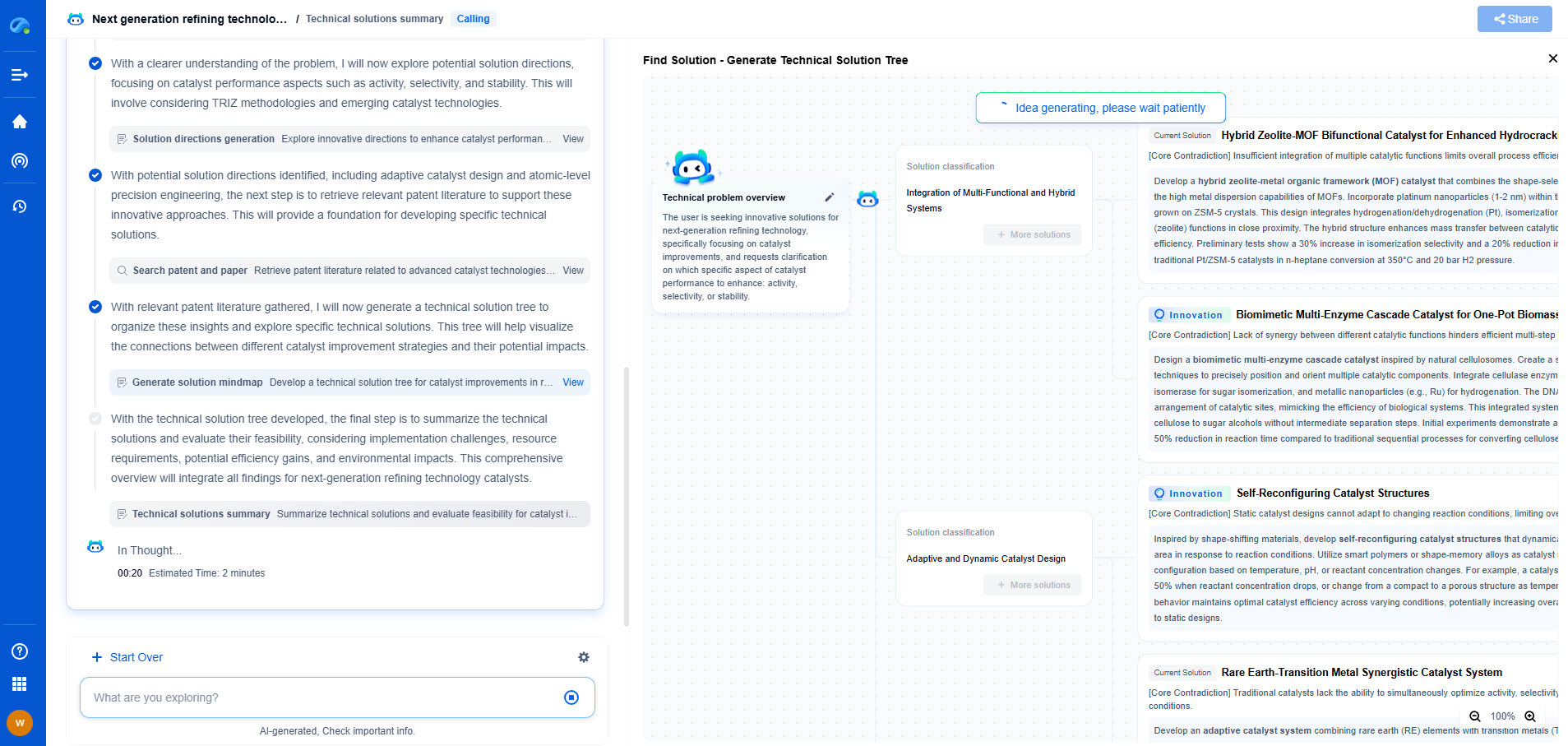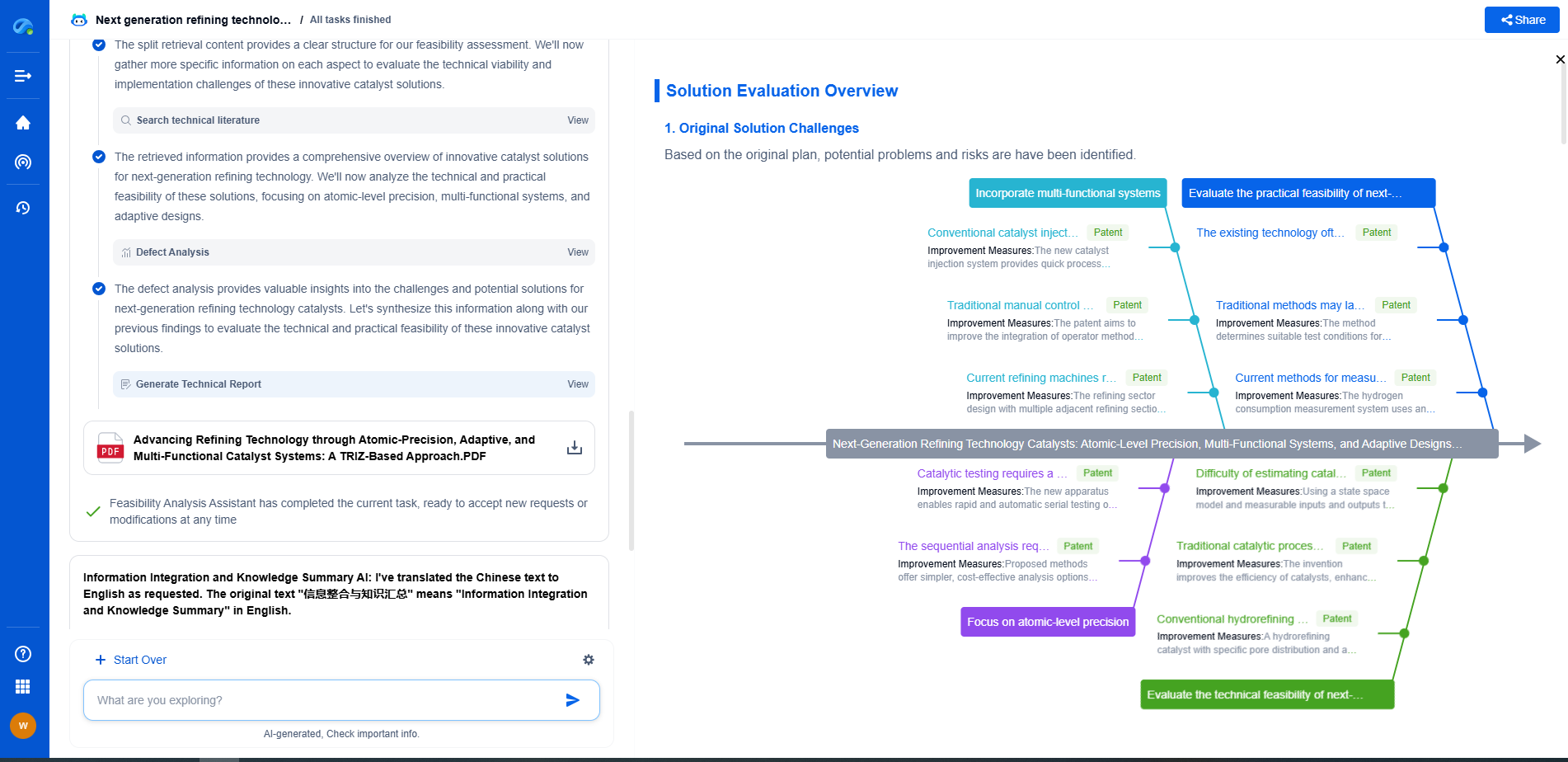Load Cell Types Compared: Shear Beam, S-Type, Pancake, and More
JUL 14, 2025 |
Load cells are fundamental components in various weighing and force measurement applications. They convert a force into an electrical signal that can be measured and standardized. In industrial and laboratory settings, selecting the appropriate type of load cell is crucial for accuracy, efficiency, and reliability. Here, we’ll explore the different types of load cells, focusing on shear beam, S-type, pancake, and other popular variants.
Understanding Shear Beam Load Cells
Shear beam load cells are widely used in industrial applications due to their robustness and accuracy. Typically, they are employed in platform scales, conveyor belt scales, and process weighing. A shear beam load cell works by applying the load to produce shear forces that are measured by strain gauges. One of their main advantages is their ability to handle eccentric loads, making them ideal for uneven loading conditions. Additionally, they offer high resistance to side forces, enhancing their durability and lifespan.
Exploring S-Type Load Cells
S-Type load cells are named after their distinct "S" shape, which allows them to measure tension and compression forces. These load cells are popular in both industrial and testing environments due to their adaptability and precision. Often used in hanging scale applications and for measuring tensile forces, S-Type load cells offer a compact design and can provide high accuracy even in challenging conditions. Their straightforward installation process and ability to deliver precise results make them a favored choice for many engineers.
Introduction to Pancake Load Cells
Pancake load cells, also known as low-profile load cells, are recognized for their flat, wide circular shape. They are versatile and can handle large capacities, making them suitable for heavy-duty applications such as bolt force monitoring and press applications. Pancake load cells provide excellent accuracy and are typically constructed with a central hub to ensure high stability and minimal deflection. Their design allows for easy integration into existing systems, and they are often chosen for applications requiring high precision in confined spaces.
Other Load Cell Variants
Beyond shear beam, S-type, and pancake load cells, there are several other types that serve specific needs. For instance, canister load cells are often used for high-capacity applications due to their rugged construction. They are typically found in vehicle scales and tank weighing systems. Another type is the single-point load cell, which is ideal for small- to medium-sized platform scales and offers reliable performance with off-center loads. Additionally, miniature load cells are available for applications with limited space, providing precise measurements in compact forms.
Comparing Load Cell Performance
When choosing a load cell, several factors must be considered to ensure optimal performance, including capacity, environmental conditions, and the specific application requirements. Shear beam load cells, for example, are preferred for their ability to handle uneven loads, while S-Type load cells offer versatility in tension and compression measurements. Pancake load cells are chosen for their stability in high-capacity applications. Understanding these differences is crucial for selecting the right load cell for your application, ensuring not only accuracy but also longevity and reliability.
Conclusion
Selecting the appropriate load cell type is essential for achieving accurate and reliable measurements in any application. Each type of load cell offers unique advantages that cater to specific needs, from the robustness of shear beam load cells to the versatility of S-type and the stability of pancake load cells. By understanding the capabilities and limitations of each type, you can make an informed decision that optimizes performance and meets your measurement requirements effectively.
From 5G NR to SDN and quantum-safe encryption, the digital communication landscape is evolving faster than ever. For R&D teams and IP professionals, tracking protocol shifts, understanding standards like 3GPP and IEEE 802, and monitoring the global patent race are now mission-critical.
Patsnap Eureka, our intelligent AI assistant built for R&D professionals in high-tech sectors, empowers you with real-time expert-level analysis, technology roadmap exploration, and strategic mapping of core patents—all within a seamless, user-friendly interface.
📡 Experience Patsnap Eureka today and unlock next-gen insights into digital communication infrastructure, before your competitors do.
- R&D
- Intellectual Property
- Life Sciences
- Materials
- Tech Scout
- Unparalleled Data Quality
- Higher Quality Content
- 60% Fewer Hallucinations
Browse by: Latest US Patents, China's latest patents, Technical Efficacy Thesaurus, Application Domain, Technology Topic, Popular Technical Reports.
© 2025 PatSnap. All rights reserved.Legal|Privacy policy|Modern Slavery Act Transparency Statement|Sitemap|About US| Contact US: help@patsnap.com

